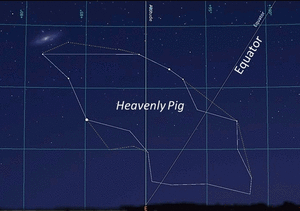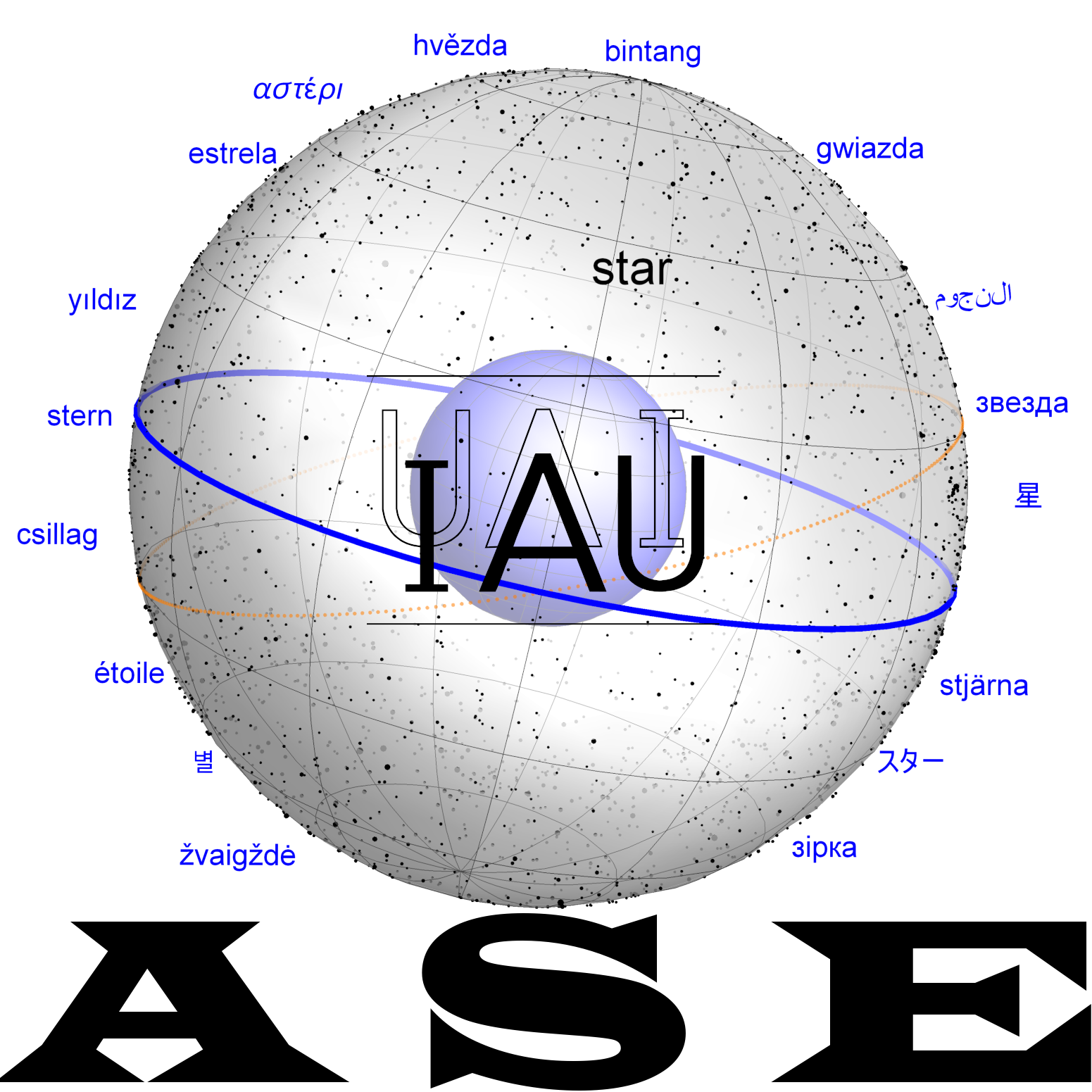Shimu
Shimu
Shimu (豕目, shǐ mù) means "Eye of the Pig", it is the name of an individual star in the ancient Chinese constellation of Tiān Shǐ (天豕, The Celestial Pig) in Neolithic China, which is called Kuí (奎, The Legs) since the late first millennium BCE. The constellation Tianshi = Kui (奎) is located in modern Andromeda and northern Pisces while the star name Tian Shimu specifically refers to the star ζ And.
Etymology and History
The Lingjiatan site, a significant Neolithic settlement in Anhui Province, China, dating back 5,300 to 5,800 years, is known for its exquisite jade artifacts and insights into early Chinese civilization, specifically the Lingjiatan culture. A jade pig found that is identified with the constellation later called Kui, The Legs (Shi Yunli 2024).[1] Several jade artifacts shaped like pigs, closely resembling this constellation, have been excavated from tombs in the sacrificial area of the Lingjiatan Culture (5800–5300 BP) in Anhui. Notably, the largest jade pig exhibits a unique orientation that closely aligns with the constellation's posture at its heliacal rising during the vernal equinox in the Lingjiatan region over five thousand years ago (see animated star chart).
The identification of the jade objects with the constellation later called Kui is supported by a phrase written by a historian of the Western Han Dynasty (201 to 8 BCE): in the Annals of Heavenly Offices (Tiānguān shū, 天官书) within the Records of the Historian (Shǐjì, 史记) by Sima Qian (司马迁, fl. 135–91 BCE), the Head Grand Historian of the Western Han Dynasty (201–8 BCE), it is mentioned:
"The Crotch is called Fēngshǐ (封豕), which is responsible for matters related to ditches and canals."[2]
Additionally, the determinative star of Kui, known as "Tianshi Mu" (Eyes of the Heavenly Pig), corresponds precisely to the position of the eyes on the jade pig. In the "Four Seasons" chapter of the Warring States Bamboo Slips collected by Tsinghua University, the constellation Tianshi and the star Shimu are also mentioned. [3] It is generally believed that the bamboo slips may date back to around 300 BC.
Maps (Gallery)
Star Name Discussion (IAU)
During the discussion of using "Kui" as a star name in the IAU-CSN in 2025, the name of this historical constellation that is much older than Kui was suggested to be used for one of a star, as it preserves even older Chinese heritage. In March 2025, WGSN decided to use the name "Shimu" (rather than Tianshi Mu (Tiān Shǐ 天豕) in order to avoid confusion with the Celestial Marketplace Tianshi 天市) for the star at the Eye of the Celestial Pig.
References
- ↑ Shi Yunli. The astronomical meaning of some jade artifacts unearthed at the Lingjiatan Site. 2: The Jade Pigs. Journal of Astronomical History and Heritage , 2024, 27(3), 503-520.
- ↑ Sima Qian. Records of the Grand Historian史记. Beijing: Zhonghua Book Company.1959.p1305.
- ↑ Huang Dekuan 黄德宽. Tsinghua University Collection of Warring States Bamboo Slips (Volume X)清华大学藏战国竹简(拾) [M]. Shanghai: Zhongxishuju. 2020.p129.








